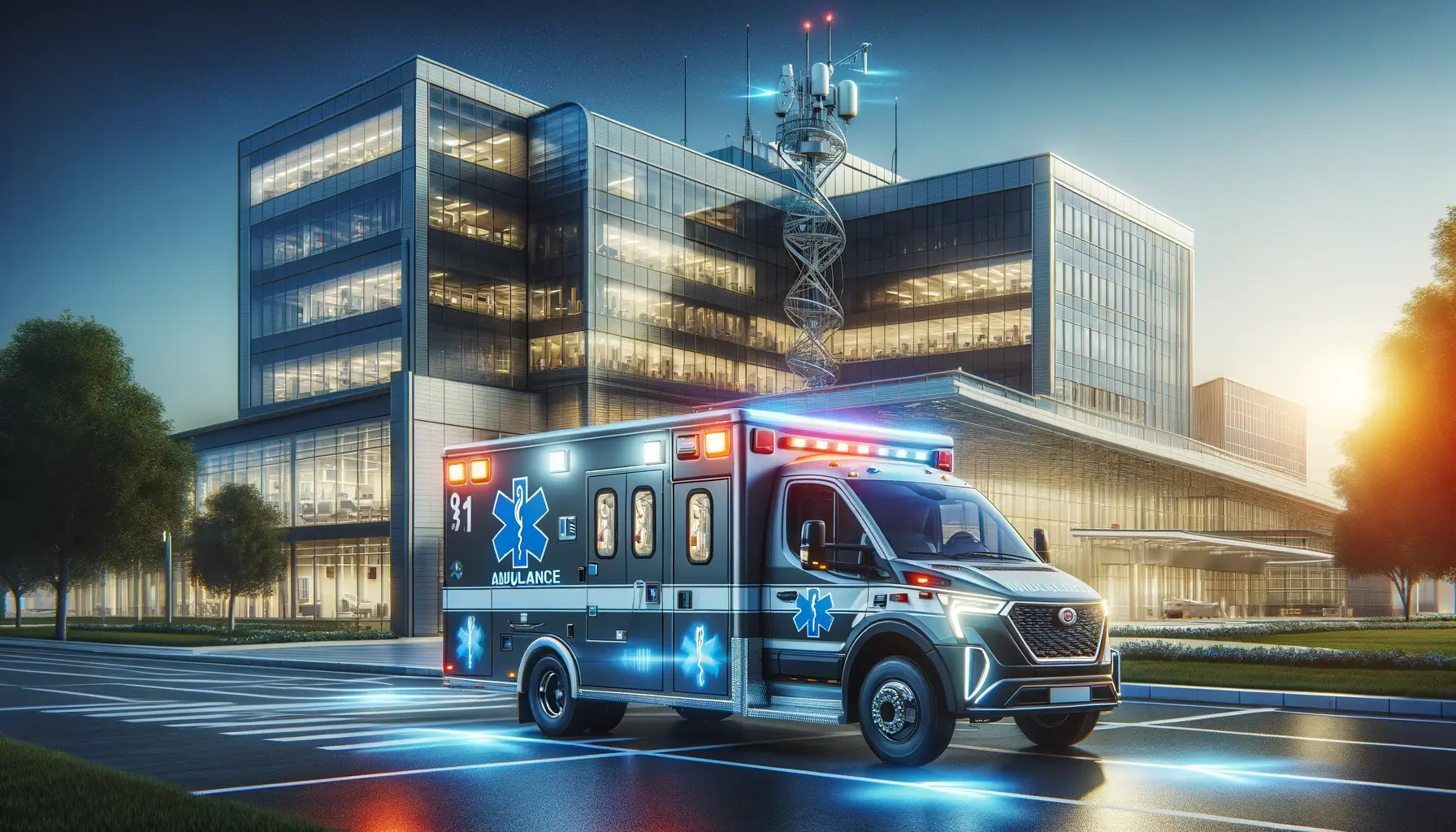The Evolution of Emergency Medical Services: From Horse-Drawn Ambulances to High-Tech Mobile Units
From the early days of horse-drawn ambulances navigating the cobblestone streets to today's high-tech mobile units equipped with cutting-edge medical technologies, EMS has undergone a dramatic transformation. This journey has not only reshaped the landscape of emergency care but has also saved countless lives by ensuring timely medical intervention. The development of EMS is a testament to human ingenuity and the relentless pursuit of improving healthcare delivery.
The Dawn of Emergency Medical Services
The inception of EMS can be traced back to the times when horse-drawn carriages served as the primary means of transporting the sick and injured. These early ambulances were far from the sophisticated units we see today; they were essentially wagons equipped with basic medical supplies. However, they marked the beginning of organized emergency care, providing a means to quickly transport patients to medical facilities. This era laid the groundwork for the evolution of EMS, highlighting the critical need for rapid medical response in emergencies.

The Birth of Modern EMS: A Historical Overview
The mid-20th century heralded a new era for EMS, particularly in the United States. The publication of the white paper "Accidental Death and Disability: The Neglected Disease of Modern Society" in 1966 exposed significant shortcomings in the country's emergency care system. This pivotal document spurred governmental action, leading to the establishment of more structured and effective EMS systems. The period between 1960 and 1973 was marked by rapid advancements: the introduction of specialized training for emergency medical technicians (EMTs) and paramedics, the standardization of emergency care procedures, the deployment of advanced life support equipment in ambulances.
The Evolution of EMS Vehicles
The transformation of EMS vehicles is one of the most visually striking aspects of EMS evolution. The transition from horse-drawn carriages to motorized ambulances in the early 20th century significantly improved response times and patient care. Today's ambulances are mobile emergency rooms, equipped with defibrillators, ventilators, and telemedicine capabilities, allowing for real-time consultation with hospital-based physicians.
Global Perspectives: The EMS System in the Kingdom of Bahrain
The evolution of EMS is not limited to the United States; countries around the globe have developed their EMS systems to meet the unique needs of their populations. The Kingdom of Bahrain, for example, has made substantial efforts to modernize its EMS. Recognizing the crucial role of timely healthcare services, Bahrain has invested in advanced ambulance units, specialized training for EMS personnel, and innovative technologies to enhance the efficiency and effectiveness of its emergency medical services.
Data-Driven Improvements in EMS
The advent of digital technology has had a profound impact on EMS. The collection and analysis of data have become integral to improving operations, ensuring provider safety, and enhancing patient care. EMS systems now utilize sophisticated software to track response times, patient outcomes, and service demand patterns. This data-driven approach supports the vision for a people-centered EMS, allowing for continuous improvement and adaptation to the changing healthcare landscape.
Specialized Training and Education: Elevating EMS Professionals
The backbone of any effective Emergency Medical Services (EMS) system lies in the competency and preparedness of its personnel. Over the years, there has been a significant emphasis on specialized training and education for EMS professionals. This shift towards rigorous educational standards was largely driven by the realization that the quality of emergency care directly impacts patient outcomes. Today, programs ranging from Basic Life Support (BLS) to Advanced Cardiovascular Life Support (ACLS) and Pediatric Advanced Life Support (PALS) are essential for EMS personnel, equipping them with the skills necessary to handle a wide array of medical emergencies. Continuous education and training ensure that EMS providers stay current with the latest medical practices and technologies, further enhancing their ability to save lives.
The Integration of Advanced Life Support in EMS
The integration of Advanced Life Support (ALS) capabilities into EMS units marks a pivotal advancement in the field. ALS encompasses a variety of life-saving procedures, including intravenous therapy, electrocardiogram (EKG) monitoring, and advanced airway management. The ability to perform these complex procedures on-site or en route to the hospital has dramatically improved the survival rates of patients experiencing severe medical emergencies, such as heart attacks, strokes, and trauma. The evolution of EMS vehicles into mobile intensive care units reflects the critical role of ALS in modern emergency medical services.
Leveraging Technology for Enhanced Emergency Response
Technology has played a transformative role in the evolution of EMS, from the development of sophisticated medical equipment to the adoption of information and communication technologies. The use of telemedicine, for example, allows EMS personnel to consult with hospital-based physicians in real-time, providing critical patient information and receiving expert guidance during the golden hour of emergency care. GPS and computer-aided dispatch systems have optimized response times, ensuring that help arrives where it's needed as quickly as possible. The incorporation of electronic patient care records (ePCRs) has streamlined the documentation process, improving the accuracy of patient information and facilitating seamless transitions of care.
The Role of Public Access Defibrillation in Community Health
The concept of public access defibrillation (PAD) represents a significant leap forward in community-based emergency care. By placing automated external defibrillators (AEDs) in public locations such as airports, shopping centers, and schools, PAD initiatives aim to increase the chances of survival for individuals experiencing out-of-hospital cardiac arrests. Training community members in CPR and the use of AEDs empowers ordinary citizens to become potential lifesavers, demonstrating the evolution of EMS beyond the confines of professional responders and into the realm of public health advocacy.
Challenges and Opportunities: Navigating the Future of EMS
Despite the remarkable advancements in EMS, the field faces ongoing challenges, including funding constraints, workforce shortages, and the need for continuous adaptation to emerging health threats, such as pandemics. Addressing these challenges requires innovative solutions, interdisciplinary collaboration, and sustained investment in EMS systems. Additionally, the global variation in EMS development underscores the importance of international cooperation and knowledge exchange to elevate emergency care standards worldwide.
Advanced Technologies and Digital Health
The integration of advanced technologies such as artificial intelligence (AI), drone delivery systems for medical supplies, and wearable health devices is set to redefine emergency medical response. AI can assist in triaging emergency calls, ensuring rapid response to critical cases, while drones could dramatically reduce the delivery time of essential medical supplies, such as AEDs and blood products, to remote or hard-to-reach areas. Wearable devices could provide real-time health data to EMS personnel before they even arrive on the scene, allowing for more personalized and effective treatment.

Interoperability and Integrated Care
The future of EMS lies in its ability to integrate seamlessly with the broader healthcare ecosystem. Interoperability among EMS providers, hospitals, and primary care services ensures a continuum of care for patients, from the point of emergency to rehabilitation. Integrated care models that include EMS as a key component could improve patient outcomes, reduce hospital readmissions, and lower healthcare costs by ensuring that patients receive the right care at the right time.
Challenges in Workforce Development and Sustainability
The EMS workforce faces challenges including burnout, staffing shortages, and the need for ongoing professional development. Addressing these challenges is critical to sustaining the quality of emergency medical services. Strategies such as enhancing EMS education programs, providing mental health support, and developing career progression paths can help attract and retain skilled professionals in the EMS field.
Global Health and EMS: Bridging the Gap
The disparity in EMS development and accessibility across different regions highlights the need for a global approach to emergency medical services. International collaborations and partnerships can play a significant role in bridging this gap, offering opportunities for knowledge exchange, training, and resource sharing. Developing a global EMS framework that addresses the unique challenges of diverse populations and geographies can help ensure that everyone, regardless of where they live, has access to lifesaving emergency care.
A Journey of Continuous Improvement
The evolution of Emergency Medical Services from horse-drawn ambulances to high-tech mobile units is a journey of continuous improvement and adaptation. As EMS faces the future, embracing innovation, fostering integrated care, addressing workforce challenges, and promoting global health equity will be key to its ongoing success. The commitment to advancing emergency medical services reflects a broader commitment to humanity, highlighting the essential role of EMS in saving lives and strengthening communities.
The evolution of EMS is an inspiring story of progress, driven by the dedication of countless individuals and the collective will to improve health outcomes. As we look forward, it's clear that the journey is far from over, but with innovation, collaboration, and resilience, the future of EMS is bright, promising even greater advancements in the mission to save lives and serve societies around the globe.
